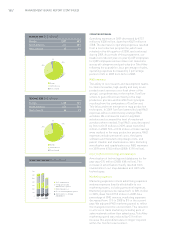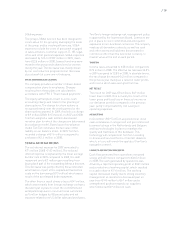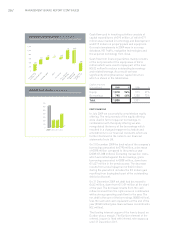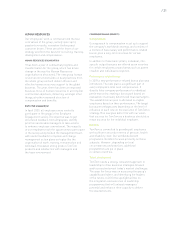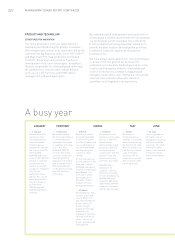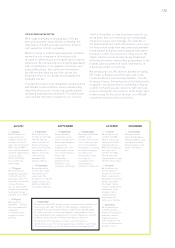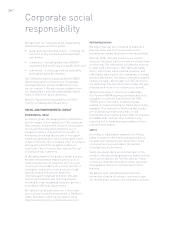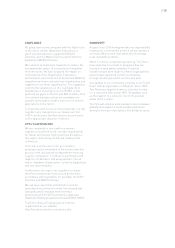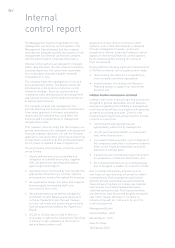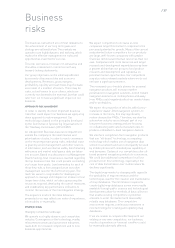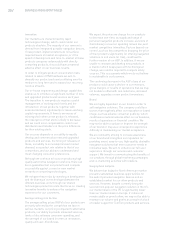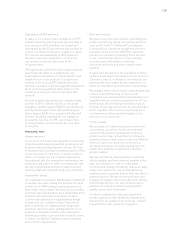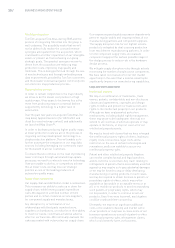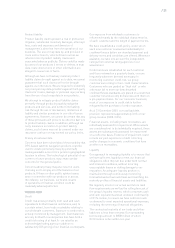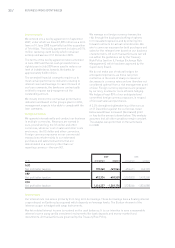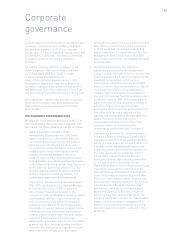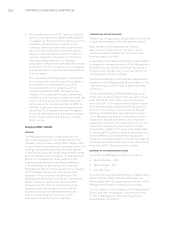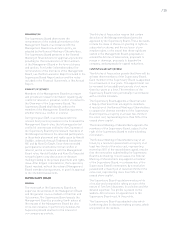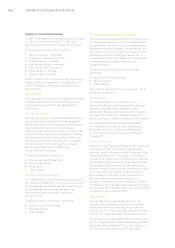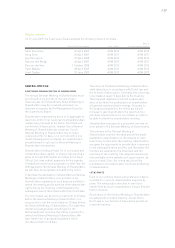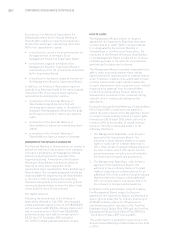TomTom 2009 Annual Report Download - page 30
Download and view the complete annual report
Please find page 30 of the 2009 TomTom annual report below. You can navigate through the pages in the report by either clicking on the pages listed below, or by using the keyword search tool below to find specific information within the annual report.28 /
Innovation
Our markets are characterised by rapid
technological change, which could render our
products obsolete. The majority of our revenue is
derived from integrated portable navigation devices.
If new product implementations do not achieve
required levels of market acceptance, or if the
speed of development and time-to-market of these
products compares unfavourably with directly
competing products, this could have a material
adverse effect on our business results.
In order to mitigate product concentration risks
related to sales of PND hardware we aim to
diversify our product and service offering over the
medium to long term and to expand our recurring
revenue streams.
Our in-house engineering and design capabilities
enable us to introduce a significant number of new
and upgraded products and services each year.
The transition to new products requires careful
management of existing stock levels and the
introduction of new products, together with
seasonal demand, significantly increases working
capital requirements. If there is an excess of
existing stock when a new product is released,
the retail price of that stock is likely to decrease
and we could incur compensation costs to our
distributors and retailers on the price difference
for their existing stock.
Our success depends on our ability to rapidly
develop and commercialise new and upgraded
products and services, the timing of releases of
these, our ability to accurately forecast market
demand, our product mix relative to that of our
competitors, and our ability to understand and
meet changing consumer preferences.
Although we continue to focus on producing high
quality automotive navigation solutions, there can
be no guarantee that our products will compete
successfully against current or new market
entrants or competing technologies.
We mitigate these risks by investing in development
and the sharing of our technologies between the
different business units through our shared
technologies production units that focus on creating
innovative benefits to enhance the navigation
experience for our customers.
Average selling price decline
The average selling prices (ASPs) of our products are
primarily affected by the competition we face in
various markets, our pricing compared to alternative
products, our ability to provide enhanced services,
levels of discretionary consumer spending, and
the strength of our brand in terms of innovation,
quality and user-friendliness.
We expect the prices we charge for our products
to decrease over time, as supply and range of
personal navigation products increase, as levels of
discretionary consumer spending remain low, and
market competition intensifies. Factors beyond our
control, such as key competitors dropping the price
of their products significantly (or offering navigation
solutions to end users for free), could lead to
further erosion of our ASP. In addition, if we are
unable to innovate and develop new products in
a manner which keeps pace with technological
change, we could be required to compete solely
on price. This is a scenario which we do not believe
is sustainable in our business.
The continuing decrease in the ASP of any of our
products could cause a decline in our revenues,
gross margins or results of operations that we may
not be able to offset with cost reductions, increased
volumes, upgrades or new product innovations.
Brand
We are highly dependant on our brand in order to
sell navigation solutions. The company could face
factors that negatively affect our reputation or brand
image, such as adverse consumer publicity, which
could have a material adverse effect on our business,
results of operations or financial condition. We
may not be able to sustain or improve the strength
of our brand or may as a consequence experience
difficulty in maintaining our market acceptance.
We are constantly striving to increase awareness
of our brand and strengthen our reputation for
providing smart, easy-to-use, high-quality, desirable
navigation solutions that meet customer needs in
innovative ways. We aim to enhance our full user
experience through our services and customer
support. We invest in communicating the benefits of
our products through global marketing campaigns
and co-marketing activities with retailers.
Geographical footprint
We believe that today the North American market
presents substantial business opportunities for
the sale of personal navigation devices and an
established market for our other products and
services. However, despite currently being the
second most popular navigation solution in the US,
our market share in the US is significantly lower
than our market share in Europe. If it does not
remain stable or grow further, we may not be able to
maintain our volume and profits as a result of a lack
of retailer support for TomTom products and services.
BUSINESS RISKS (CONTINUED)


